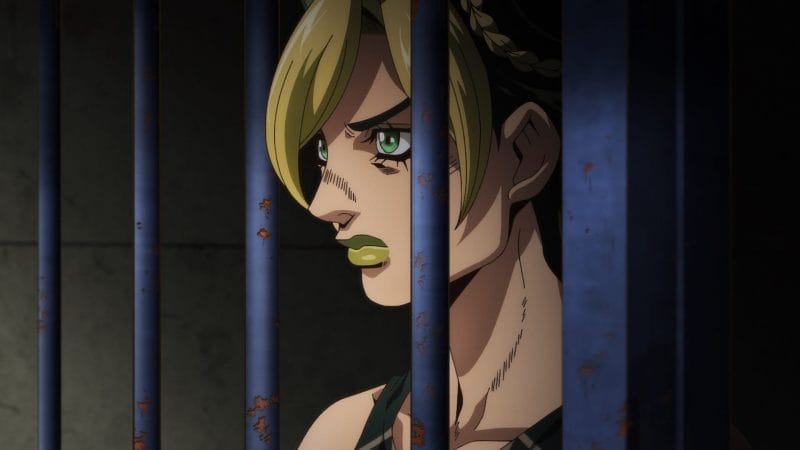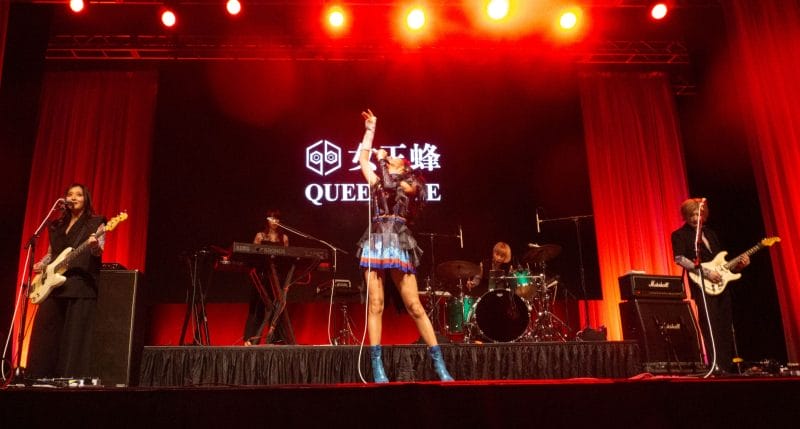The Wachowski sisters’ 2008 adaptation of Speed Racer is not a perfect film. It possesses its fair share of odd pacing issues, some distracting and weak effects shots in its daytime sequences, and at times dialogue of dubious quality. However, these blemishes are just one facet of what makes it the perfect adaptation of 1967’s Mach GoGoGo.
In adapting Speed Racer, the Wachowskis succeed by walking the tightrope of demonstrating reverence for the source material while never being afraid to push aesthetic boundaries and add greater depth to the narrative. Part of this is the use of intentional evocations of the original work via nods to existing characters and aesthetic elements, as well as new creations that neatly slot into that framework. Then, there are parallels drawn in the actual creation of both the original work and its adaptation, both created in a technical liminal space and emphasizing stylized effects work that render both texts highly distinct. Lastly, there are those decisions made for the adaptation that emphasize the story’s pre-existing family melodrama and critiques of capitalism, presented with utmost sincerity and an undeniable heart that adds a greater emotional coherence—and makes Speed Racer 2008 stand out and shine among Hollywood’s attempts to adapt anime to live action.

1967’s Mach GoGoGo was the brainchild of sibling duo and Tatsunoko co-founders Tatsuo and Toyoharu (better known as Ippei Kuri) Yoshida. The series was their first full-color show, made in the wake of their 1965 television debut Space Ace, and represented a massive leap forward. Taking inspiration from Elvis vehicles like Viva Las Vegas and James Bond adventures like Goldfinger, as well as the brothers’ own comics work in Yoshida’s Pilot Ace and Kuri’s Mach Sanshiro, Mach GoGoGo tells the story of Go Mifune (Speed Racer) as he confronts gangsters, rival racers, ninjas, and even mutant gorillas with the aid of the Mifune family, his girlfriend Michi, and the watchful eye of the mysterious Masked Racer.
The brothers’ aesthetic sensibilities, heavily influenced by American comic books, are far more pronounced in this work than in Space Ace, informing the more realistically proportioned, detailed designs of the series’ cast. This element, when combined with the need for mechanical animation, would push Tatsunoko to develop new production methods to compensate for a massively increased workload that also necessitated superior draftsmanship. Without a tracing machine to transfer line art directly to cels (a method that would prove essential for future anime titles emphasizing high detail), it was up to the art department and Tatsunoko’s newly assembled internal photography crew to pick up the slack, resulting in a highly distinct visual style that remains fairly unique to Mach GoGoGo.

As the title was airing in Japan, international distribution rights were acquired by the company Trans-Lux and adapted to air in syndication by Peter Fernandez, who had previously worked with anime localization pioneer Fred Ladd on projects like Astro Boy and Gigantor. The result was Speed Racer, a localization that managed to stay mostly true to the spirit of the source material despite minor edits and the unfortunate obfuscation of its Japanese origin. The first in a long line of Tatsunoko titles that would serve as touchstones for anime fandom in the US, Speed Racer enjoyed a healthy life in first-run syndication and persisted on the airwaves for some time, before eventually fading into relative obscurity.
The title would molder until 1991, when it was acquired from Trans-Lux by John Rocknowski, who would go on to found Speed Racer Enterprises and engage in a media blitz that would cement Speed Racer’s status in popular culture. This included running the original series on MTV and Cartoon Network, a US-produced animated sequel series, a wide array of merchandise, several prominent television commercials, and even a dance track. This boom in interest encouraged the creation of a live-action feature film adaptation, a project that would begin development in 1986 before early attempts to get the project off the ground began in earnest in 1992. The project languished for two decades, though, with big names like Gus Van Sant, Hype Williams, Keanu Reeves, and even Vince Vaughn attached at one point or another without the project ever entering production.

It wasn’t until 2006, when Lana and Lily Wachowski were hired to helm their first directorial project since 2003’s The Matrix Revolutions, that the film entered production. With them, they brought the team of artists that had crafted the visual identity of The Matrix; art director Hugh Bateup, production designer Owen Paterson, and visual effects supervisors Dan Glass and John Gaeta. The resulting production is a lovingly crafted tribute to the original work, fleshing out the narrative core of Mach GoGoGo in a strikingly sincere story, wrapped in a hyperbolic, pop art world that pays homage to its source material while developing its own distinct aesthetic. While the film would ultimately be rejected by critics and theater-going audiences, it has steadily gained a cult following over the years, earning recognition as a compelling work on its own merits and as an adaptation of Mach GoGoGo.
Before diving into the relative complexities of shared technical and thematic DNA, it is helpful to first examine how Speed Racer (2008) homages Mach GoGoGo and its English localization Speed Racer (1967) on a surface level in its recreation of aesthetics in the world and characters.
The heightened, pop art aesthetic of Speed Racer (2008) and its use of digitally rendered, deliberately cartoonish environments allows it to faithfully recreate the look of Mach GoGoGo’s cast and mechanical designs without looking out of place. While Speed’s design is updated for many of the races, he dons his iconic outfit from the original series during the first leg of the Casa Cristo 5000, and the rest of the Racer family closely resemble their counterparts in the original series.

Similarly, the Wachowski sisters’ Speed Racer film features mechanical designs highly evocative of the original work, aiming less for realism and instead trading in smooth, sleek forms that accentuate a distinct silhouette and exaggerated curves. The mix of CG and photobashing helps to develop the warped perspective and compressed space of the 2008 Speed Racer’s environments, which is used in conjunction with the cartoon irreality of the costuming and designs of the cast and cars to create a space where the daredevil stunts and “car-fu” combat are able to land with the desired impact on the audience. These aesthetic choices mesh with, and even enhance, the adaptation’s storytelling choices, which similarly evoke the original series’ iconic moments without recreating them beat for beat.
Both series and film are the products of a liminal technical space. The 1967 series aspires to realism, but, as noted above, predates the mass adoption of the tracing machine (also known as Xerox) in the space of Japanese animation. So, while the need for consistent draftsmanship for the mechanical forms and more realistically proportioned human figures was a task the animators tackled admirably, it was in the special effects applied by the art department that this sense of realism was achieved. This too was the case for 2008’s Speed Racer; a film shot entirely on green screen, relying on a combination of CG effects, multiple image layers, and some classic cel animation tricks to create some 2000 visual effects shots, all while evoking the spirit of the original anime.

Mach GoGoGo relies heavily on the use of brush effects to add a layer of dimensionality and texture to its figures. The mechanical animation uses this most prominently, white airbrush highlights accenting shining metal and reflections of light on glass, with darker shades employed for shading or to demonstrate dirt and scuffs. Similarly, much attention is paid to the use of specularity in 2008’s Speed Racer. In retaining the simplicity of the designs from the original series, a greater focus is placed on the way light plays off them. Starting with reference photos of how light plays off actual cars, configuring their lighting system so that the models of the vehicles used for the film accurately reflected that reference. The backgrounds were lit first, with the cars functioning like a chrome ball, gathering the lighting information from the environment. That information would then be adjusted manually as needed by the lighting team, then further enhanced and stylized using lens flares, glows, and other optical effects along with airbrushing to push the visuals to hyperbolic heights.
The 1967 series also employs a number of more standard techniques like smearing and a combination of trailing speed lines rendered in the line art, as well as speed lines created by the use of airbrush. These deformations help convey speed and keep things from feeling overly stiff. Similarly, the 2008 film recreates this effect by deforming the models of the cars as needed, while also adding greater control over the use of effects animation. New systems were developed that allowed animators to manually control the directionality of sparks, smoke, and streaks of light to recreate this effect, with results based on velocity. A far more high-tech solution, but one which necessitated a greater degree of manual control and served the function of greater stylization that lay at the heart of paying homage to the aesthetics of the original series.

The Wachowskis’ Speed Racer is not just a visual homage, however—the additions and adaptations they made to the story and world show an understanding of the source material’s genre conventions and elevate its themes and cast to new heights. New characters and organizations are included, but slot naturally into the existing framework of the original work. Employing the often silly naming conventions of the 1967 English adaptation, new racers like Gray Ghost, Jack “Cannonball” Taylor, and the likes of E.P. Arnold Royalton of Royalton Industries would readily fit into the original text, just as hyperbolic and cartoonish as many of the original characters, presented with earnestness and sincerity.
When discussing the Wachowskis’ successes in their adaptation of the original series’ genre conventions, it is significant to first point out what the 1967 animated series isn’t. In contrast to later anime-centering sports like 1968’s Star of the Giants or 1973’s Aim for the Ace!, Go starts the series as a quite capable racer, and the emphasis is placed more on the fantastical scenarios and locales. It follows a globe-trotting boy’s adventure mold, a la Jonny Quest, a genre code that the 2008 film adaptation recreates admirably, spotlighting exotic racetracks and a grand conspiracy at work that must be thwarted by Speed, Trixie, and the Racer family, with the challenge of races often being less confronting the skill of other drivers but dealing with the ways they cheat or the hazards of the track.

Working within this framing, the Wachowskis then introduce the most prominent narrative inventions of this film, primary antagonist E.P. Royalton and Royalton Industries, which serve to highlight and enhance an underlying concept in the original 1967 series. The Racer family, a small independent business, would frequently struggle to fund Speed’s entries into various races, and the first major storyline prominently featured an attempt at corporate espionage and the theft of one of Pops Racer’s designs. Despite this, the series rarely explores a critique of capitalism, instead emphasizing villainous extralegal syndicates and even antagonistic nations.
The Royalton plotline pushes to the fore a condemnation of capitalism, with the various criminal entities—mercenary racers, mobsters, assassins, etc—being hired by Royalton Industries to maintain their control of the racing world. And, indeed, it is revealed that the entire history of modern racing in the 2008 film is subject to the whims of corporate entities, not merely Royalton Industries, enhancing the larger conflict of the final race and upping the stakes into proving the validity and preserving the sanctity of racing while subverting those that wish to control and pervert it.

That love of the sport is at the center of the heightened melodrama in 2008’s Speed Racer. We are introduced to Speed as a child, obsessed with racing, born into a family that similarly adores the sport, as he is confronted with the death of his brother Rex, who is seemingly killed mid-race. Yet despite this, we see that love continues to grow within him, impacting all those around him. His father is able to move on from Rex’s death in part because of Speed’s passion, learning to trust his son, and bonding as they work together to tackle Royalton industries. Trixie especially is evidence of the elevated melodramatic framing. The pair’s quiet moments when they’re alone are highlights of the film, harkening back to classic Douglas Sirk melodramas like Only Heaven Allows, and offering greater interiority to Speed as he processes his feelings about his family and racing. The Racer family, especially Pops and Mom Racer, are generally much more involved than they are in the show, culminating in them working to construct the Mach 6 prior to the final climactic race in a nod to the last-minute alterations to the Mach 5 in “The Most Dangerous Race”.
These changes and additions, combined with aesthetic nods and parallel technical limitations all culminate in the success of the Wachowski sisters’ Speed Racer as an adaptation. Not a perfect film, perhaps, but certainly one which captures the heart of its source material, producing a singular, visually magnetic adaptation of the original 1967 series. Despite its issues, its combined adoration of the source text and the works that took inspiration from it along with a willingness to add and play with the narrative and visual language of that work elevate it above countless other Hollywood anime adaptations.
Edited by: Alex Henderson












